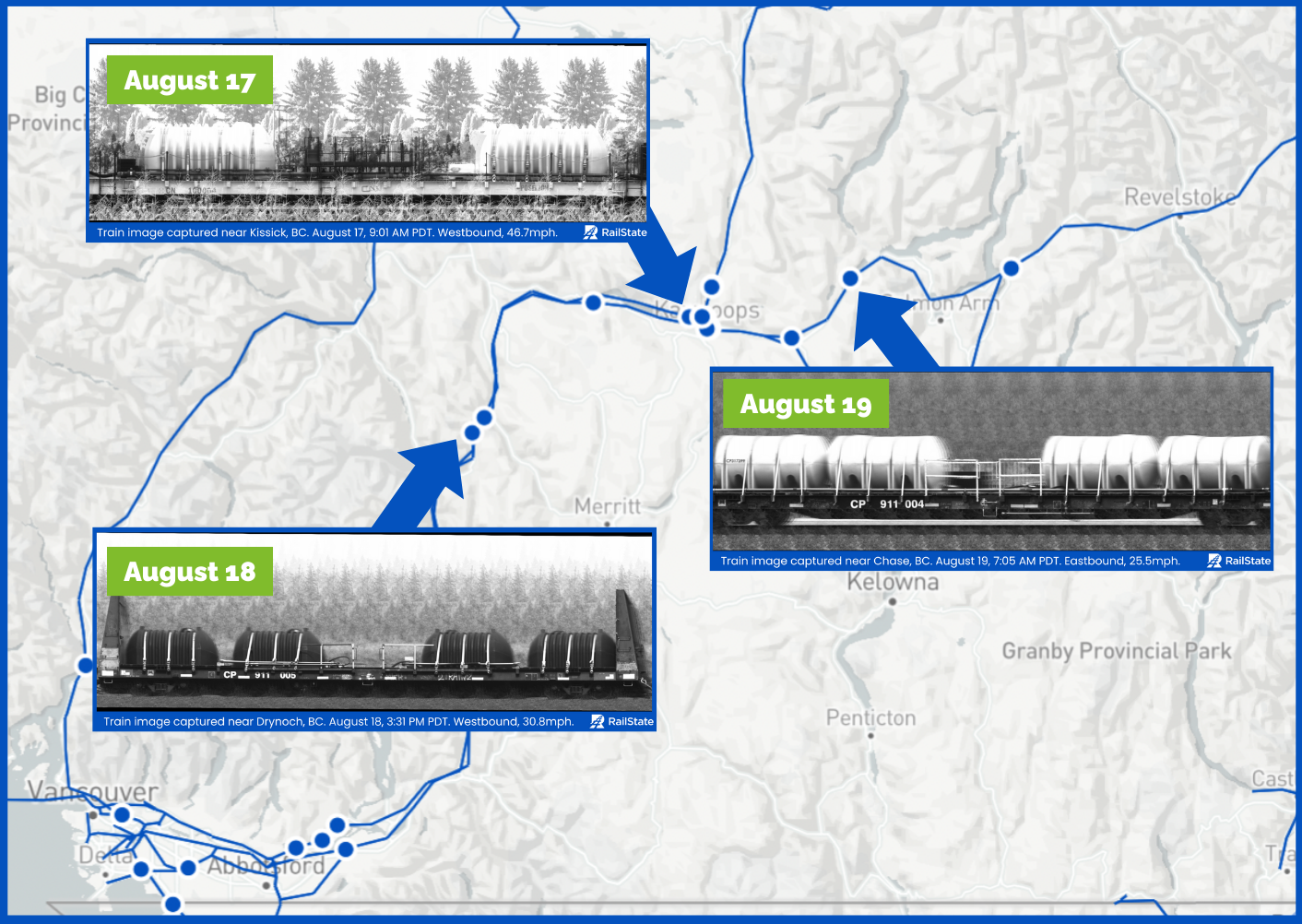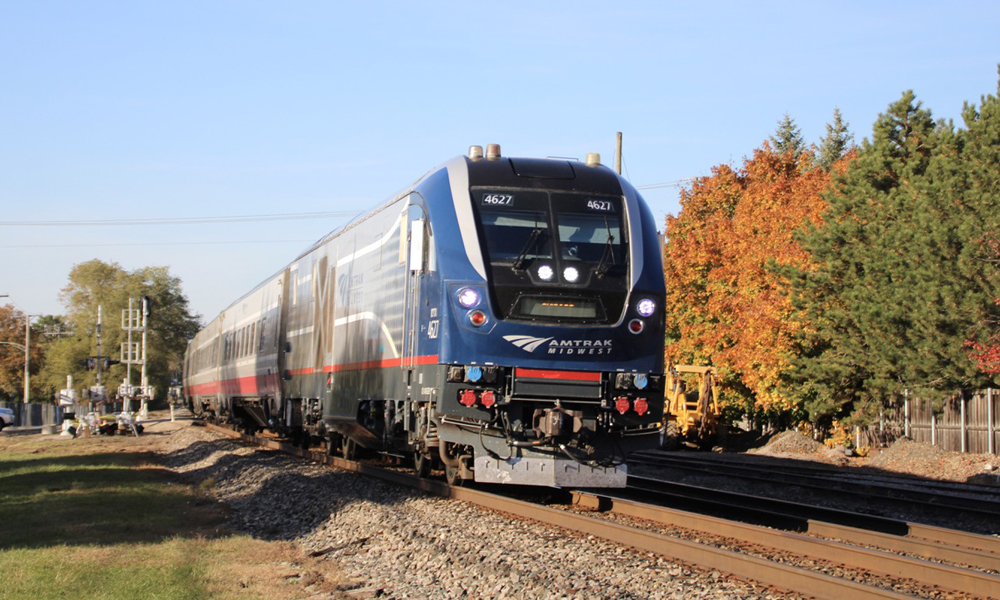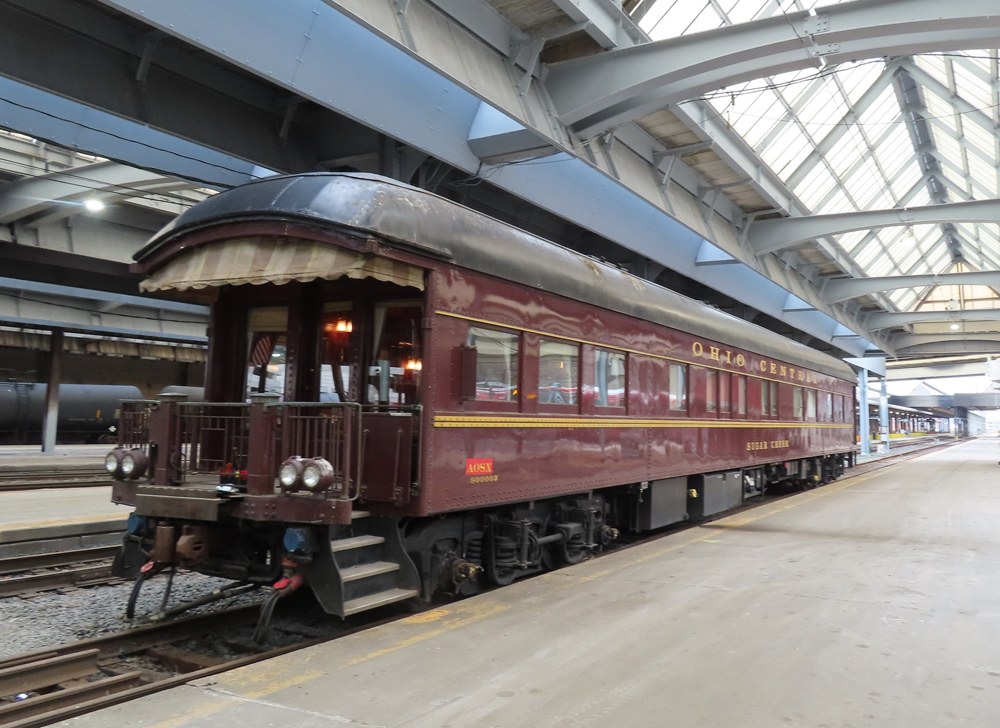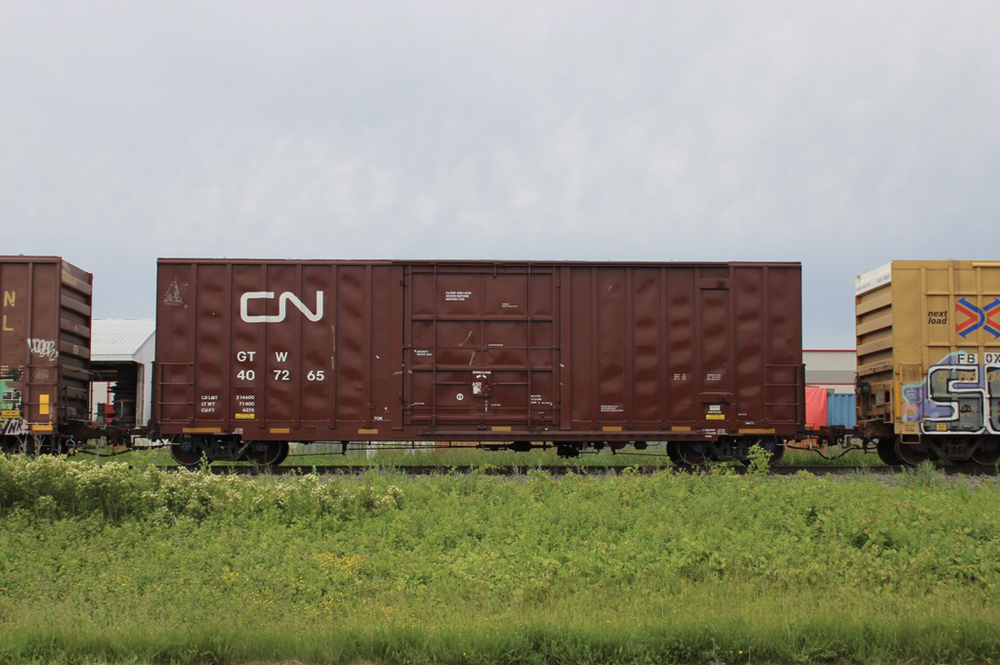Canadian National and Canadian Pacific Kansas City operations have returned to normal in wildfire-ravaged British Columbia, where a fire halted rail traffic for a day last week, according to RailState, a company that tracks freight rail movements across Canada.
The Kookipi Creek Fire shut down the railroads’ directional running zone in the Fraser River Canyon on Friday, Aug. 18. The Trans-Canada Highway, which parallels the railroads, remains closed through the area.
Trains traveling the directional running zone – where westbounds use CN trackage and eastbounds roll on CPKC – were delayed a day or more.
“This was a short but significant delay and we’re seeing other wildfire-related delays in BC,” said John Schmitter, RailState’s co-founder and chief commercial officer. “With wildfires intensifying, backlogs from the BC ports strike still remaining, and the looming grain harvest, the Canadian rail network is under a lot of pressure. For shippers with some optionality, it’s critical to know what’s going on and identify opportunities.”
Travel through the directional running zone from Heffley (CN) and Monte Creek (CPKC) to Chilliwack typically takes less than a day, RailState notes. For trains passing through Heffley on Aug. 17 and headed to Vancouver, the travel time rose to nearly two full days. Trains passing Monte Creek on the 17th saw travel times increase threefold from the expected travel time. While delayed, trains were held in the Kamloops area.
The average transit time is now back to normal ranges.
The railroads have been deploying fire suppression cars regularly throughout British Columbia. RailState’s sensors capture train images throughout the rail network. The images below are fire suppression cars seen at Kissick, Drynoch, and Chase over the past week.

Wildfires in the Fraser Canyon area continue to burn and remain a threat to various communities. An evacuation order has been called for the Lytton area and Highway 1 remains closed to traffic.
The railroads are actively working to keep the route secure for rail traffic. In the early morning hours on Thursday there was a delay in traffic as a short train with a fire suppression car moved through the Drynoch area.
An eastbound intermodal train traveled through Drynoch at 8:23 p.m. on Aug. 23. Four hours later, the train with a CP fire suppression car traveled westbound, against the flow of normal traffic on this route, at 12:19 a.m. on Aug. 24. The next eastbound loaded train came through at 2:08 a.m., followed closely by a manifest train and two intermodal trains, all within the next hour.
A six-hour gap in eastbound trains is not unheard of for the DRZ, RailState notes, but these service delays and additional resource strains from increased fire protection and maintenance needs highlight the challenges the railroads face.














I don’t know where the location names came from for the directional running zone, but they do not reflect reality. In particular, the east end is rather absurd, well east by more than 50 miles beyond the zone, and even east of where the railways finally come into the same valley at Kamloops.